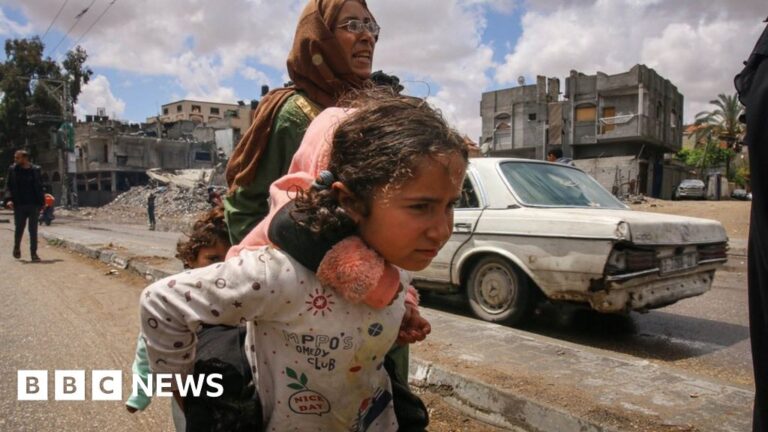Israeli Prime Minister Benjamin Netanyahu said a new ceasefire proposal for Gaza was “far from Israel’s basic demands” but negotiations would continue.
His comments came after Hamas announced it had accepted ceasefire terms offered by Qatari and Egyptian mediators.
“The ball is now in Israel’s court,” said a source from a Palestinian organization.
Israeli troops and tanks were spotted overnight near the Rafah border crossing in southern Gaza, according to Israeli media reports.
Earlier, Israeli forces carried out airstrikes on Rafah, on the border with Egypt, after warning Palestinians to evacuate the eastern part of the city.
Tens of thousands of residents are believed to have been affected by the operation, with many seen packed into cars and donkey carts on Monday.
Israel has long threatened an offensive against Hamas resistance in the city of 1.4 million people, many of whom have taken refuge there from Israeli military offensives in other parts of the Gaza Strip.
“Although Hamas’s proposal falls far short of Israel’s basic requirements, Israel will send a delegation of mediators to rule out the possibility of reaching an agreement on terms acceptable to Israel,” Netanyahu’s office said in a statement late Monday. “I will.”
At the same time, he added: Israel’s wartime cabinet said it would “use military pressure on Hamas to further the war objectives of freeing the hostages, destroying Hamas’s military and governance capabilities, and ensuring that Gaza does not pose a threat to Israel in the future.” The decision was made to continue Operation Rafah in order to protect the country. .
Hamas issued a statement earlier in the day saying its political leader Ismail Haniyeh had conveyed the “approval of the proposal regarding the ceasefire agreement” to the Qatari prime minister and Egypt’s intelligence chief.
image source, Getty Images
A senior Palestinian official familiar with the proposal told the BBC that Hamas had agreed to “permanently cease hostilities” if conditions were met.
The phrase hinted that Hamas may be contemplating an end to the armed struggle, but no further details were provided. This will be achieved through a two-stage ceasefire agreement, each lasting 42 days.
The first phase includes the release of Israeli female soldiers held hostage in exchange for 50 Palestinian prisoners in Israeli prisons, including some serving life sentences.
During this period, Israeli forces will remain in Gaza. However, within 11 days of the ceasefire taking effect, Israel plans to begin dismantling military installations in the center of the territory and withdraw from the Salah al-Din road, the main north-south road, as well as the coastal road.
After 11 days, displaced Palestinians are allowed to return to the north.
The second phase is expected to end with “sustainable long-term peace” and a complete lifting of the blockade of Gaza, the official said.
U.S. State Department spokesman Matthew Miller told reporters that the United States, which is trying to broker a deal along with Qatar and Egypt, is considering Hamas’s response and is “talking to our partners.”
The war began on October 7 when Hamas militants stormed into southern Israel, killing about 1,200 people and taking more than 250 hostages.
More than 34,700 people have been killed in the ensuing Israeli military operation in the Gaza Strip, according to the Hamas-run Gaza Strip’s Ministry of Health.
In a deal reached in November, Hamas released 105 hostages and about 240 Palestinian prisoners in Israeli prisons in exchange for a week-long ceasefire.
Israel says 128 hostages in the Gaza Strip are still missing, and at least 34 of them are presumed dead.

